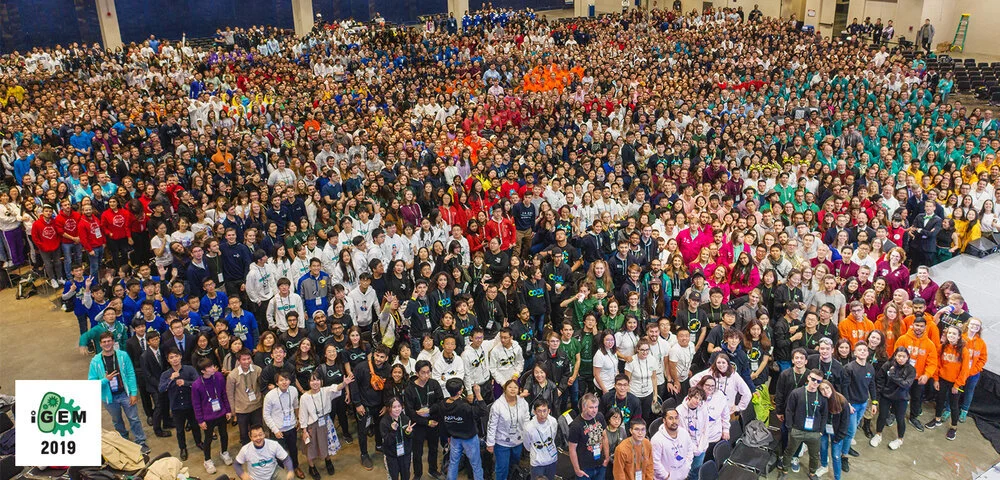A reflection on Benchling's partnership with iGEM
by Lily Helfrich
Since day one at Benchling, we've been on a mission to help scientists accelerate their research and collaborate more efficiently. That's why we were excited to partner with the iGEM Foundation for their 2019 Competition season. The iGEM Foundation and Benchling share many similar goals — empowering scientists, building community, fostering collaboration, pushing the envelope in biology. iGEM accomplishes these goals through hands-on education and friendly competition. At Benchling, we accomplish these goals through a different approach: software.
The vast majority of biologists still rely on disconnected tools like paper, email, and spreadsheets to capture their data. As a result, they waste valuable time hunting down data and doing busywork. But with Benchling, scientists can design, record, and share experiments more efficiently — on a single, modern platform. More than 180,000 scientists, from academics to cutting-edge biotechs, have relied on Benchling to design DNA, collaborate on experiments, and manage complex workflows.
We were excited to partner with iGEM not only because iGEM teams are working on incredibly innovative projects, but also because we recognize that Benchling can help iGEM teams make their innovative ideas a reality. We have also seen this in practice, having built relationships with iGEM teams who use Benchling and talking with iGEMers around the world at the Giant Jamboree.
Benchling booth at the iGEM 2019 Giant Jamboree
So, what does Benchling actually help iGEM teams do? Here are the key things that iGEM teams accomplish with Benchling:
Design biological parts, and model cloning.
Benchling offers a full suite of sequence design and analysis tools. In Benchling, iGEMers seamlessly import parts from the iGEM Registry and backbones from public sequence repositories, design new parts from scratch, and model assemblies with those parts.
Create sequence repositories.
As iGEM teams design their projects and start running experiments, they inevitably develop lots of sequence data. iGEMers use Benchling to compile and annotate parts, design primers, and create plasmids. And then they organize sequences into repositories — projects and folders — in Benchling. These repositories can be readily and reliably assessed on the cloud.
Share protocols, results, and sequences.
Members of iGEM teams collaborate endlessly, and Benchling facilitates that collaboration. iGEM teams create Benchling organizations, share projects with one another, and contribute Notebook entries and sequences to shared projects. As a result, every team member can access up-to-date data, making it easy to follow progress in the lab.
Build a central hub for notes and sequences.
iGEM teams need tools that help them practice good data management. Benchling provides a single place to take notes, write protocols, capture results, and design and store sequences. iGEMers can even drag and drop sequences into their Benchling Notebook. When it's time to upload all of this data to their team Wiki, they can find it all in Benchling and export it all from Benchling.
Avoid wasting precious resources on expensive software.
Benchling's Notebook and Molecular Biology applications are free (yes, totally and completely free!) for iGEM teams, academics, and educators. Every member of an iGEM team can sign up for Benchling, whenever they want, without having to worry about their access being terminated.
Screenshot of Benchling’s software
To learn more about some of the iGEM teams who used Benchling in 2019 to power their creative projects, check out this story on the Benchling blog.
Benchling is proud to partner with the iGEM Foundation, and we look forward to another exciting iGEM competition season in 2020! Until then, visit Benchling's Partner Page to learn more about Benchling's 2019 partnership with iGEM and to sign up today (it's not too late to get some extra features!).
This blog post is a guest contribution by a Partner Sponsor of the 2019 iGEM Competition. Learn more about sponsorship opportunities at iGEM.









